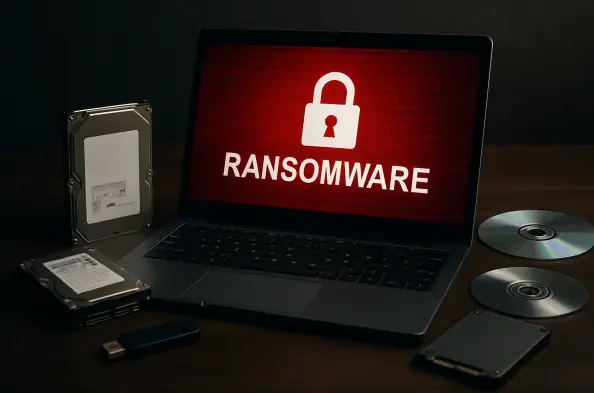What happens when the guardians of justice become the hunted in a digital battlefield? In August, a ransomware attack struck at the heart of Pennsylvania’s Office of Attorney General (OAG), encrypting vital files and holding them hostage for payment. This wasn’t merely a technical hiccup; it was a calculated strike against a pillar of public trust, exposing the fragility of governmental systems in an era of relentless cybercrime. The incident paralyzed operations, disrupted courtrooms, and left a state agency scrambling to restore order, painting a stark picture of vulnerability in the digital age.
The Stakes of a Digital Assault
This cyberattack on the OAG isn’t just a local headache—it’s a glaring warning sign of a broader epidemic. Ransomware has evolved into a weapon of choice for cybercriminals, targeting public institutions with alarming frequency. According to the FBI’s 2024 Internet Crime Report, ransomware incidents against government entities have surged by 37% since 2024 began, costing millions in recovery efforts. For Pennsylvania, the attack meant more than frozen servers; it threatened the very integrity of the justice system, where delays in legal proceedings could erode public confidence. The significance lies in understanding how deeply such disruptions ripple through society, impacting everyone from courtroom plaintiffs to everyday citizens awaiting legal resolutions.
When Justice Goes Offline
The immediate fallout of the ransomware attack was nothing short of chaos. Servers crashed, cutting off access to the OAG’s website, email systems, and phone lines. This digital blackout severed communication channels, leaving staff unable to respond to urgent public inquiries or coordinate with other agencies. With around 1,200 employees across 17 offices affected, the scale of disruption was staggering, turning routine tasks into logistical nightmares. The incident revealed how a single malicious act can grind an entire state agency to a halt, exposing gaps in preparedness that cybercriminals are all too eager to exploit.
The judicial system bore the brunt of this technological ambush. Civil and criminal cases across Pennsylvania faced unavoidable delays as courts scrambled to issue time extensions to manage the backlog. Attorney General Dave Sunday, while addressing the crisis, reassured the public that no long-term damage to prosecutions or proceedings is anticipated. Yet, even temporary setbacks in legal timelines can have profound effects, stalling justice for victims and defendants alike, and highlighting how interconnected technology has become to the machinery of law enforcement.
A Defiant Stand Against Extortion
In the face of this digital siege, the OAG took a firm stance: no ransom would be paid. Attorney General Dave Sunday’s decision sent a clear message to cybercriminals—Pennsylvania would not bow to coercion. “Giving in only emboldens these attackers to strike again,” Sunday stated during a press briefing, emphasizing the importance of resilience over capitulation. This position aligns with federal recommendations, as the Cybersecurity and Infrastructure Security Agency (CISA) notes that paying ransoms fuels a vicious cycle, with 80% of victims who pay being targeted again within a year. The resolve to stand firm, though challenging, set a precedent for other agencies watching this crisis unfold.
Behind closed doors, an intense investigation unfolded. Details remain limited to protect the integrity of the probe, but the OAG confirmed collaboration with state and federal partners to uncover the attack’s origins and prevent future breaches. Sunday also pledged transparency, promising to notify any individuals if their data was compromised. This cooperative approach underscores a growing recognition that combating cybercrime requires a united front, pooling resources and expertise to outmaneuver increasingly sophisticated threats.
Rebuilding from the Digital Rubble
Recovery efforts kicked into high gear following the attack, with tangible progress amid persistent hurdles. Most of the 1,200 staff regained access to email accounts, while alternative communication methods kept daily operations limping along. The main phone line and website returned online, though full functionality remained elusive in the immediate aftermath. These steps, while incremental, demonstrated a determined push to reclaim normalcy, ensuring that public services could continue despite the lingering shadow of the attack.
Beyond restoration, the focus shifted toward fortification. The OAG began implementing enhanced cybersecurity measures, learning hard lessons from the incident to safeguard against future assaults. This proactive pivot mirrors a national trend, as a 2024 study by the National Association of State Chief Information Officers found that 68% of state agencies plan to increase cybersecurity budgets over the next two years. For Pennsylvania, the attack served as a wake-up call, urging not just recovery but a reimagining of digital defenses to protect the backbone of justice.
Lessons Forged in Crisis
Looking back, the ransomware attack on Pennsylvania’s Office of Attorney General stood as a defining moment of vulnerability and resolve. It exposed the stark reality that even institutions tasked with upholding the law are not immune to the predatory tactics of cybercriminals. The operational chaos and judicial delays that ensued painted a vivid picture of the stakes involved, while the decision to refuse payment marked a courageous stand against extortion. Collaborative investigations and recovery efforts further showcased a commitment to turning a crisis into a catalyst for change.
Moving forward, the path demands action on multiple fronts. Public institutions across the nation need to prioritize robust cybersecurity frameworks, investing in training and technology to shield against inevitable threats. Policymakers must advocate for stronger regulations and funding to support these defenses, ensuring that state agencies are not left as easy targets. For citizens, staying informed and vigilant about digital risks becomes ever more critical, as the line between personal and public security continues to blur in this interconnected world. The lessons from Pennsylvania’s ordeal offer a blueprint for resilience, urging all stakeholders to act before the next attack strikes.






